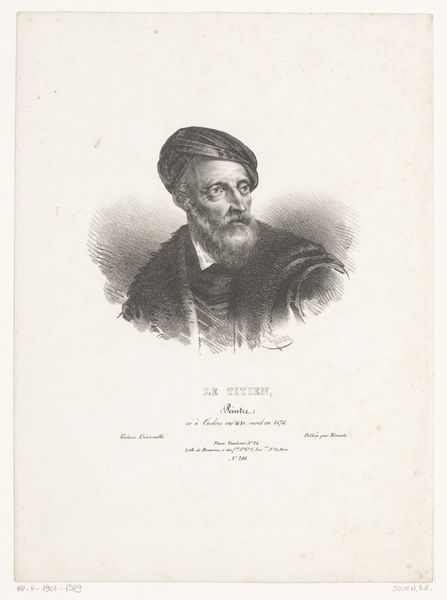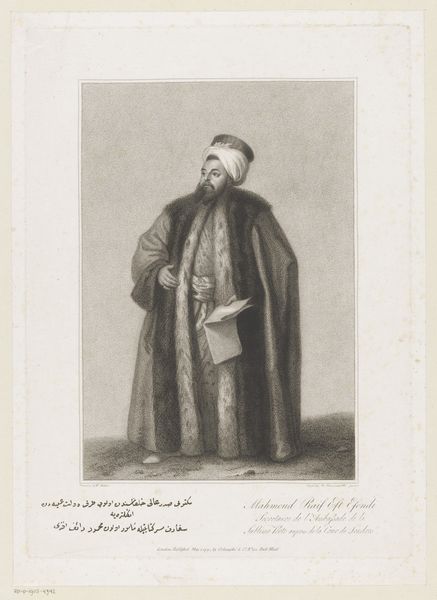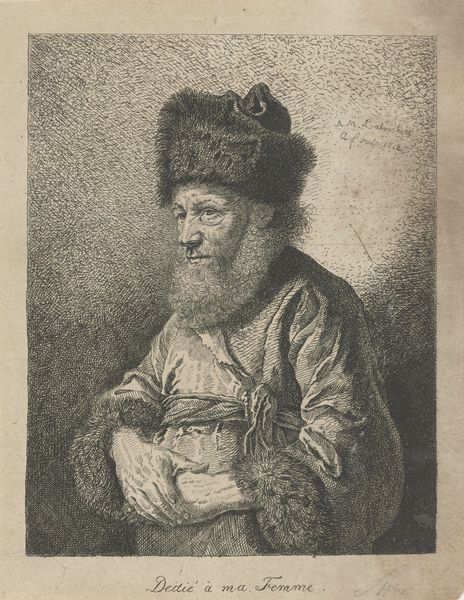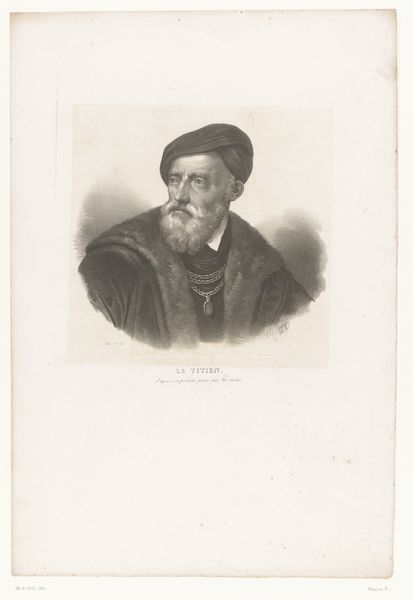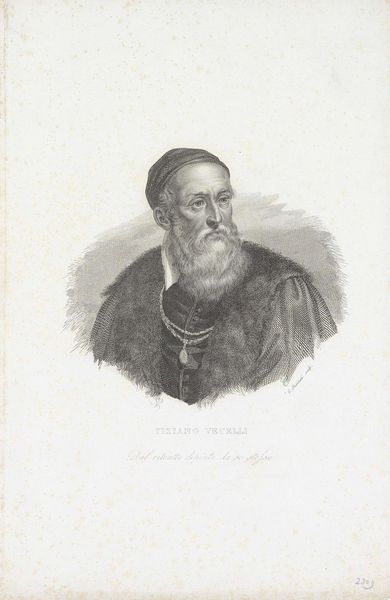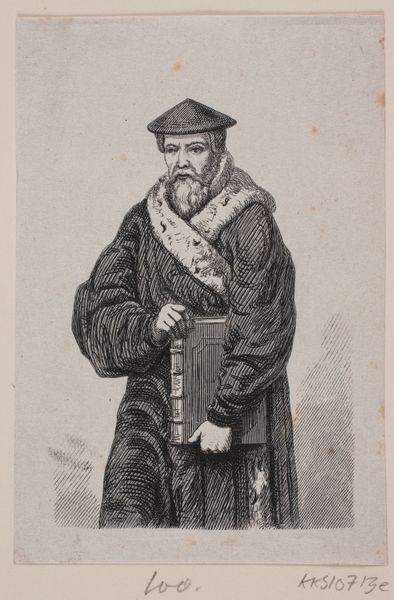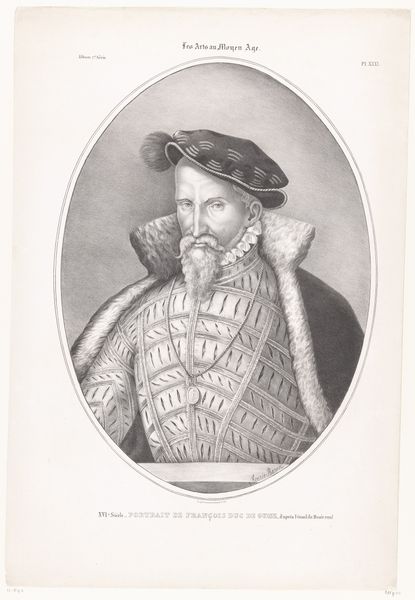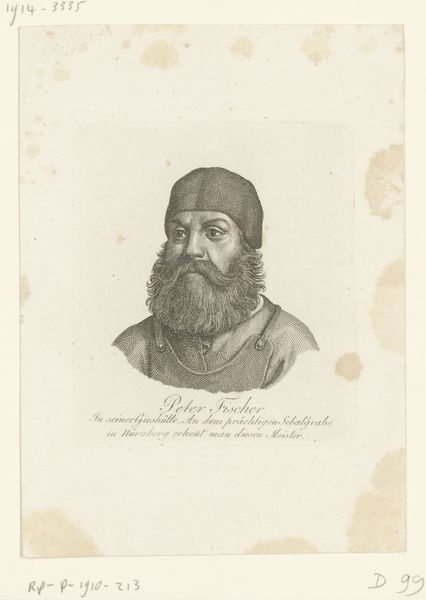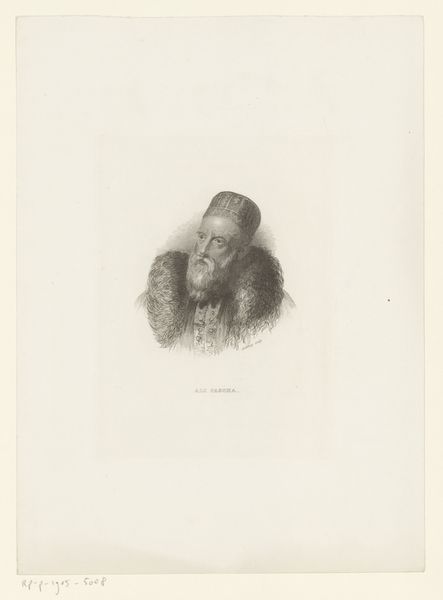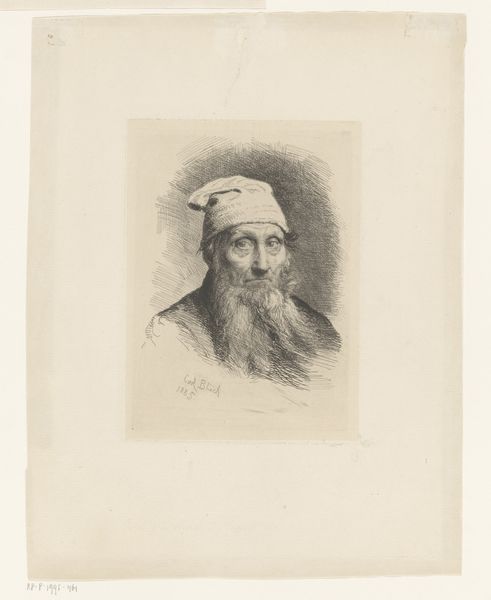
print, engraving
#
portrait
#
neoclacissism
# print
#
old engraving style
#
portrait reference
#
pencil drawing
#
portrait drawing
#
history-painting
#
engraving
Dimensions: height 546 mm, width 374 mm
Copyright: Rijks Museum: Open Domain
Editor: Here we have a print from 1825, "Portret van Ali, pasja van Ioannina," by Jean-Baptiste Mauzaisse, held here at the Rijksmuseum. It is a stately engraving. I'm immediately drawn to the contrast between the very detailed face and the softer rendering of his garments. What are your thoughts on this piece? Curator: This print offers us a fascinating glimpse into the early 19th century’s fascination with exoticism and power. Consider the historical context: Ali Pasha of Ioannina was a powerful Albanian ruler within the Ottoman Empire, known for his autonomy and defiance of the Sultan. How do you think this political reality is reflected in the artistic choices, particularly within the neo-classical style? Editor: Well, the neo-classical style often emphasized order and idealized forms, yet Ali Pasha, as you say, was far from the Ottoman ideal. Perhaps the artist sought to impose a sense of European order onto a figure seen as outside that framework? Curator: Precisely. The image is also a product of orientalism. Look at the intricate details of his clothing and weaponry. How does this emphasis on detail, rather than say, emotional depth, serve the image's function for a European audience? It almost flattens him into a figure for consumption. Editor: It creates a distance, definitely. The image is more about presenting him as an object of curiosity, stripped of a complex inner life. That sword, especially, seems like a prop. Curator: Right. Consider too how prints like this circulated – in books, journals, displayed in homes. They helped shape public perception, not just of Ali Pasha, but of the entire Ottoman world. We’re seeing not just a portrait, but a powerful political statement mediated through artistic choices. Editor: That makes the image much more unsettling. I thought it was just a historical portrait, but I see now that it's caught up in political currents. Thank you for sharing that. Curator: My pleasure. Analyzing art's role in constructing perceptions is essential to understanding its lasting impact.
Comments
No comments
Be the first to comment and join the conversation on the ultimate creative platform.
